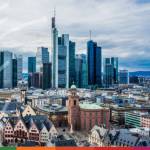Estimated reading time: 5 minutes
Nestled in East Asia, Mongolia, known as the ‘land of the blue sky,’ boasts unique ecosystems and a rich cultural heritage. However, the country’s geographic location, extreme weather conditions, and delicate ecosystems render its economy highly susceptible to the pervasive risks of climate change.
The rate of historical climate warming in Mongolia is considered to be alarmingly high. This positions Mongolia among the countries experiencing the most rapid climate changes globally.
Consequently, the Mongolian government recognised the need to enhance community resilience and transition towards greener development practices.
As part of its Sustainable Development Vision 2030, the government has committed to increasing renewable energy generation, improving urban planning, and building resilience to climate change impacts.
At the World Export Development Forum (WEDF), hosted in Ulaanbaatar, Mongolia, TFG’s Deepesh Patel spoke with Davaadalai Batsuuri, Economic Policy Advisor to the President of Mongolia, to learn more about Mongolia’s commitment to green trade and the country’s environmentally conscious strategies.
Climate change and Mongolia’s economy
Despite contributing to only 0.1% of global CO2 emissions, Mongolia faces significant challenges due to its vast land size, and susceptibility to climate change. According to Batsuuri, “Over 70% of Mongolian land was affected by desertification to some extent.”
This staggering percentage indicates the vulnerability of Mongolia to climate change, even though its own emissions are relatively low.
In addition, he further emphasised that the impact of climate change in the country goes far beyond the agricultural sector, adding, “Climate change is not affecting only the agricultural sector, but it’s also affecting all the sectors in Mongolia.”
The Mongolian government has set targets to reduce CO2 emissions and meet its sustainable development goals by 2030 in a bid to protect the environment, conserve nature, and safeguard the nation’s biodiversity.
Moreover, green development and sustainable cooperation have become focal points for Mongolia’s economic policies as it strives to create a more sustainable and resilient future.
Nurturing sustainable business: Supporting small businesses to go green
Recognising the pivotal role of SMEs in Mongolia’s economy, Batsuuri highlighted the government’s dedication to supporting these businesses. He stated, “The Mongolian government is making every effort to support SMEs from every aspect.”
This support is vital to the economy, as SMEs constitute around 90% of global enterprises and contribute approximately 40% of Mongolia’s gross national income.
With a goal of significantly increasing the participation of MSMEs in the green business sector by 2030, the Mongolian government is actively collaborating with the private sector. Together, they are working towards creating an empowering environment for sustainable practices.
Batsuuri underscored the joint efforts, stating, “The Mongolian government and the private sector have joined forces to increase the number of companies engaged in green business by providing discount loans and legal environment support.”
To illustrate these initiatives, the government of Mongolia has successfully organised the ‘Green Finance Forum’ twice, providing a platform to attract investments for local companies and promote sustainable business practices.
Additionally, Mongolian financial institutions are actively supporting and facilitating the growth of sustainable businesses by providing necessary financial support, “Our Mongolian local financial institutions are also paying much attention to supporting green businesses and other support.” Batsuuri added.
Planting for a greener future: The “One Billion Trees” movement
One of Mongolia’s significant initiatives in its green transition is the “One Billion Trees” movement, a national campaign launched by the president of Mongolia, Khurelsukh Ukhnaa.
The ambitious movement aims to plant one billion trees by 2030, with the goal of reducing the impact of climate change, preserving Mongolia’s ecosystem stability, and strengthening the country’s contribution to achieving the United Nations Sustainable Development Goals (SDGs).
The importance of the movement was reiterated by Batsuuri, saying, “Currently, forests cover only 8% of Mongolian land. In order to fight desertification as well as dust storm, we need to intensify this national movement.”
Showcasing the tangible progress made since the campaign’s launch, he noted, “Within the first year since the commencement of this national movement, our seed stock has been increased by 4.5 times.”
On top of that, Batsuuri accentuated that the “One Billion Trees” movement in Mongolia has far-reaching benefits beyond environmental preservation.
He explained, “This movement will create jobs, increase the income of Mongolian families, and also protect the Mongolian environment. This way we are fighting against climate change.”
By generating employment opportunities and increasing household incomes, the movement contributes to the socio-economic well-being of the Mongolian communities. With its holistic approach, the “One Billion Trees” movement plays a profound role in promoting sustainable development in Mongolia and its fight against climate change.
Unlocking Mongolia’s sustainable energy potential
A country such as Mongolia has huge potential for the production and generation of clean and renewable energy, therefore, presenting a substantial opportunity for the country’s sustainable development.
In recent years, Mongolia has ventured into various clean energy projects, successfully attracting investments and forging partnerships in the renewable energy sector.
Affirming Mongolia’s commitment to diversifying its energy sources, Batsuuri pointed out the Irsein Buren hydroelectric power plant project, saying “This project is currently underway with funding from the Chinese government. It aims to not only meet Mongolia’s local energy demand but also to contribute to the rational consumption of energy resources.”
Similarly, the Mongolian government acknowledges the need to address CO2 emissions originating from the country’s extensive livestock husbandry sector. With over 70 million livestock in Mongolia, the government has set its sights on improving the quality of the livestock to reduce CO2 emissions.
Batsuuri explained this approach, “Our government is aiming at not increasing the quantity of livestock, but improving the quality of our livestock. This way we will succeed in reducing the CO2 emission from the agricultural sector.”
By focusing on enhancing livestock quality, Mongolia seeks to reduce the environmental impact associated with agricultural activities, contributing to the broader goal of achieving a greener and more sustainable agricultural sector.
It is evident that Mongolia is forging its path towards a more resilient and sustainable economy, setting an inspiring example for nations worldwide.
From tackling the risks of climate change to nurturing sustainable businesses and embarking on the ‘One Billion Trees’ journey, the ‘land of the blue sky’ is shaping its future rooted in sustainability and resilience.

































